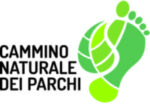The Village
The first center was built on the ruins of Alba Longa, a pre-Roman city founded by Ascanio, son of Aeneas. Archaeological evidence is present in the vicinity of Castel Gandolfo, including the remains of Domitian's villa and late-republican and imperial buildings. The village owes its name to the powerful Lombard family of the Gandolfi family, who controlled the territory in the 12th century. Later it was elevated to Ducato in favor of Bernardino Savelli, until in 1596 it was seized by insolvency and from 1604 it was included in the inalienable possessions of the Holy See. Today the center is a charming medieval village, inserted within the Regional Park of the Castelli Romani and is known for being the papal summer residence.
Sites of interest
- Domitian's Villa
Titus Flavius Domitian (51-96 dec.c), he had a large villa with a park built on the Albani Hills by Gaius Rabirio, already famous builder of the Palatine Hill. The huge villa covered an area of 14 square kilometers, about 55 hectares, to whose residential area today corresponds the town of Castel Gandolfo. The villa, divided into three large terraces of about 500 m, was flanked by smaller buildings that descended on one side towards the shores of Lake Albano and on the other towards the ancient Via Appia.
- Doric Nymphaeum
The first site that you come down from Castel Gandolfo towards the lake is the Doric Nymphaeum, located in a higher position than the other monuments that, conversely, are lapped by Lake Albano. Originally incorporated into the extended Domitian residence, which developed all around the lake, today the nymphaeum appears isolated and perfectly preserved in all its beauty and majesty.
- Ninfeo Bergantino
Better known as Bagni di Diana, the Ninetium Bergantino is located on the western shore of Lake Albano, about halfway between the Doric Nymphaeum and the Lake's Emissary. Also, like the Doric Nymphaeum, it faces Monte Cavo (the ancient mons Albanus). Having probably originated from a pre-existing pozzolana quarry, it has a rather irregular shape. Incorporated in the first century d. C. from the vast imperial villa of Domitian, the Bergantino was rediscovered in the mid-800 during clandestine excavations.

